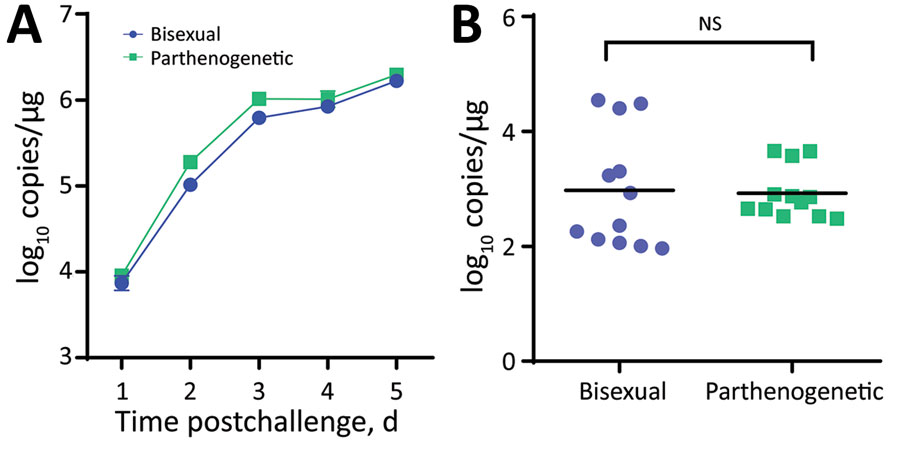Volume 28, Number 2—February 2022
Research
Rapid Spread of Severe Fever with Thrombocytopenia Syndrome Virus by Parthenogenetic Asian Longhorned Ticks
Figure 7

Figure 7. Susceptibility of bisexual and parthenogenetic Asian longhorned ticks to severe fever with thrombocytopenia syndrome virus (SFTSV), China. Groups of bisexual or parthenogenetic nymph Asian longhorned ticks were fed separately on 1 IFNAR−/− (interferon α/β receptor knockout) C57/BL6 mouse that was intraperitoneal inoculated with 2 x 103 focus-forming units of SFTSV. A) Viremias of IFNAR−/− C57/BL6 mice were monitored by using real-time PCR during tick feeding. B) SFTSV infection in the Asian longhorned ticks were tested by real-time PCR after molting into adults. Each dot or square indicates 1 tick. Black horizontal bars indicate means. NS, not significant.
1These authors contributed equally to this article.
Page created: September 27, 2021
Page updated: January 22, 2022
Page reviewed: January 22, 2022
The conclusions, findings, and opinions expressed by authors contributing to this journal do not necessarily reflect the official position of the U.S. Department of Health and Human Services, the Public Health Service, the Centers for Disease Control and Prevention, or the authors' affiliated institutions. Use of trade names is for identification only and does not imply endorsement by any of the groups named above.